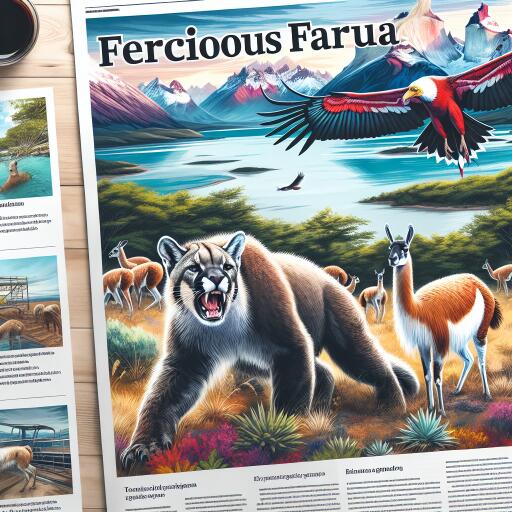
Ferocious Fauna – Patagonia Regional Times
On a cold December morning, the silent forests of the Huachuca Mountains came alive through the lens of a remote trail camera. It captured an adult jaguar, a majestic and elusive predator, moving with purpose through the dense underbrush. This same creature had been documented previously in the Whetstone Mountains, painting a picture of a lone wanderer traversing the rugged landscapes of southeast Arizona.
The vision of such a creature prompts a reflection on the planet’s apex predators. While some regions boast of crocodiles, giant serpents, and formidable sharks, our focus here narrows to the mammalian masters of the wild: coyotes, black bears, mountain lions, and the increasingly rare jaguar.
Against the backdrop of a burgeoning human population, now exceeding eight billion, our planet groans under the weight of its finite resources. Historically, Arizona’s vast expanses were roamed by jaguars, Mexican wolves, and the formidable Mexican grizzly bears. The passage of time has seen a dramatic reshaping of the landscape and a decline in these apex predators.
These predators, reigning supreme at the top of food chains, require expansive habitats, which are being encroached upon by human activities. Once symbols of untamed wilderness and raw power, these creatures have been vilified, their natural behaviors cast as criminal acts against human interests. Yet, the greater crime lies in their potential disappearance, reducing them to mere whispers of the past.
Why should we concern ourselves with these formidable beings? One answer lies in their indicative value of ecological health. The presence of apex predators suggests a thriving ecosystem, a beacon of hope amidst widespread environmental degradation. The recent jaguar sighting is a testament to the success of our conservation initiatives, an emblematic stitch in the fabric of our preserved habitats.
Moreover, these creatures serve a humbling role, a natural check that puts our human ego in perspective. Encounters with the wild—be it with bears, coyotes, or even alligators—invoke a primordial sense of survival, reminding us of our place in the natural order.
Contrary to popular belief, the danger posed by these predators to humans is minimal. They naturally steer clear of human interaction, often disappearing before we even become aware of their presence.
Advocacy for their protection calls for a reevaluation of our approach to land use. Limiting livestock grazing, mining, and large-scale agriculture, alongside the expansion of federal wilderness protections, can safeguard their habitats. Encouragingly, the potential reintroduction of species such as the Mexican wolf and possibly the grizzly bear symbolizes a restoration of ecological balance, enhancing the biodiversity of our region.
Preserving these species isn’t just an ecological imperative; it holds economic potential through nature-based tourism. By emulating the success of places like Yellowstone, we can transform our rich biodiversity into a source of sustainable revenue, all while experiencing the thrill of coexisting with nature’s most formidable predators.
In the quest to maintain the delicate balance of our ecosystems, we must recognize the intrinsic value of all species, especially those that remind us of the wildness that once governed the entire globe. Through concerted efforts in conservation and a shift in our perception of these apex predators, we can secure a future where they continue to roam free, integral to our ecological and cultural heritage.





Leave a Reply